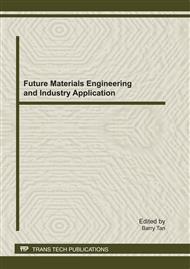p.280
p.287
p.292
p.299
p.305
p.312
p.320
p.326
p.332
Mechanism Analysis of Indigenous Microbial Enhancement for Residue Oil Recovery
Abstract:
Biotechnological nutrient flooding was applied to the North block of the Kongdian Oilfield during 2001-2005. The biotechnology involved the injection of a water-air mixture made up of mineral nitrogen and phosphorous salts with the intent of stimulating the growth of indigenous microorganisms. During monitoring of the physico-chemical, microbiological and production characteristics of the North block of the Kongdian bed, it was revealed significant changes took place in the ecosystem as a result of the technological treatment. The microbial oil transformation was accompanied by an accumulation of carbonates, lower fatty acids and biosurfactants in water formations, which is of value to enhanced oil recovery. The microbial metabolites changed the composition of the water formation, favored the diversion of the injected fluid from closed, high permeability zones to upswept zones and improved the sweep efficiency. The results of the studies demonstrated strong hydrodynamic links between the injection wells and production wells. Microbiological monitoring of the deep subsurface ecosystems and the filtration properties of the fluids are well modified, producing 40000 additional tons of oil in the test areas.
Info:
Periodical:
Pages:
305-311
Citation:
Online since:
October 2011
Authors:
Price:
Сopyright:
© 2012 Trans Tech Publications Ltd. All Rights Reserved
Share:
Citation:


